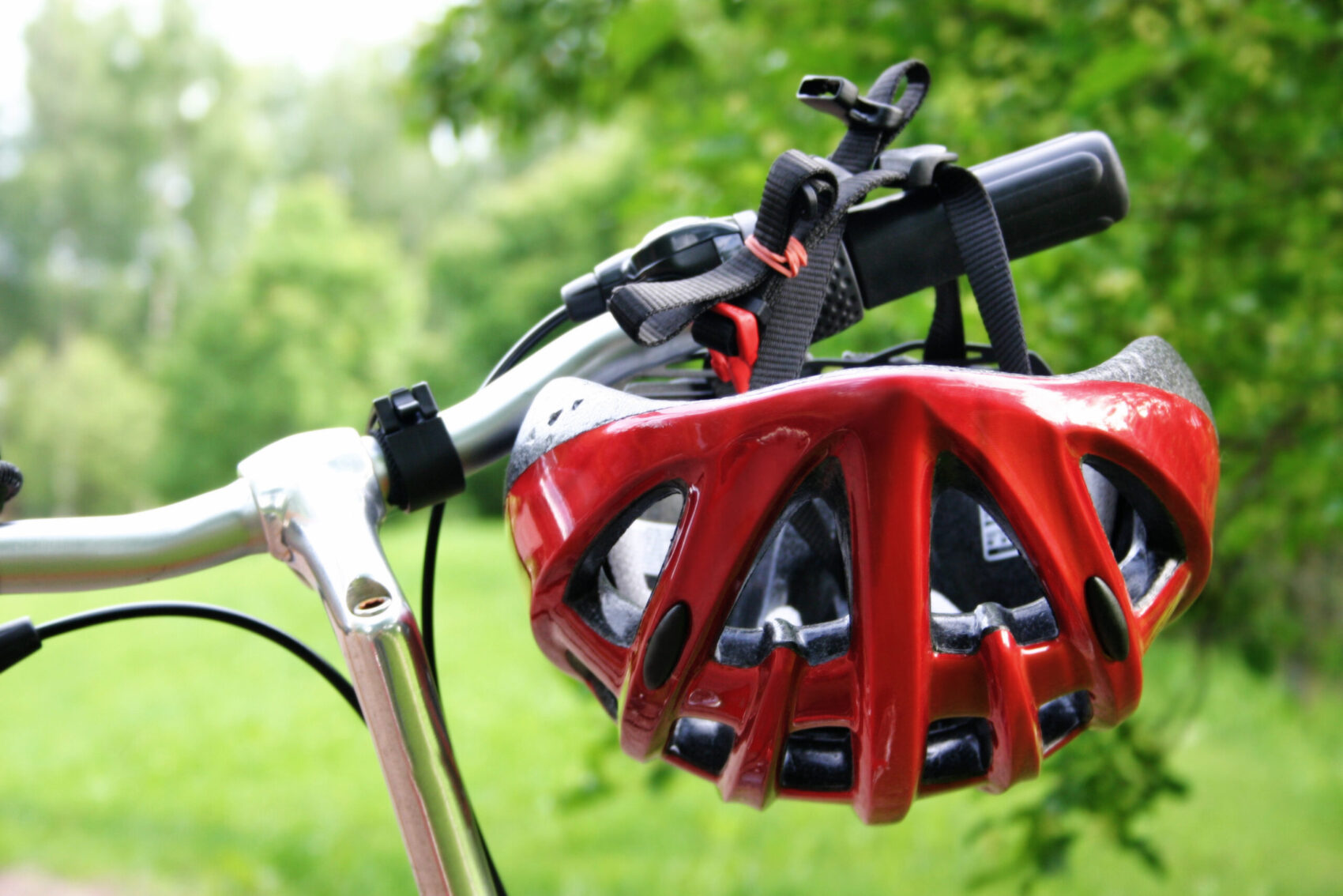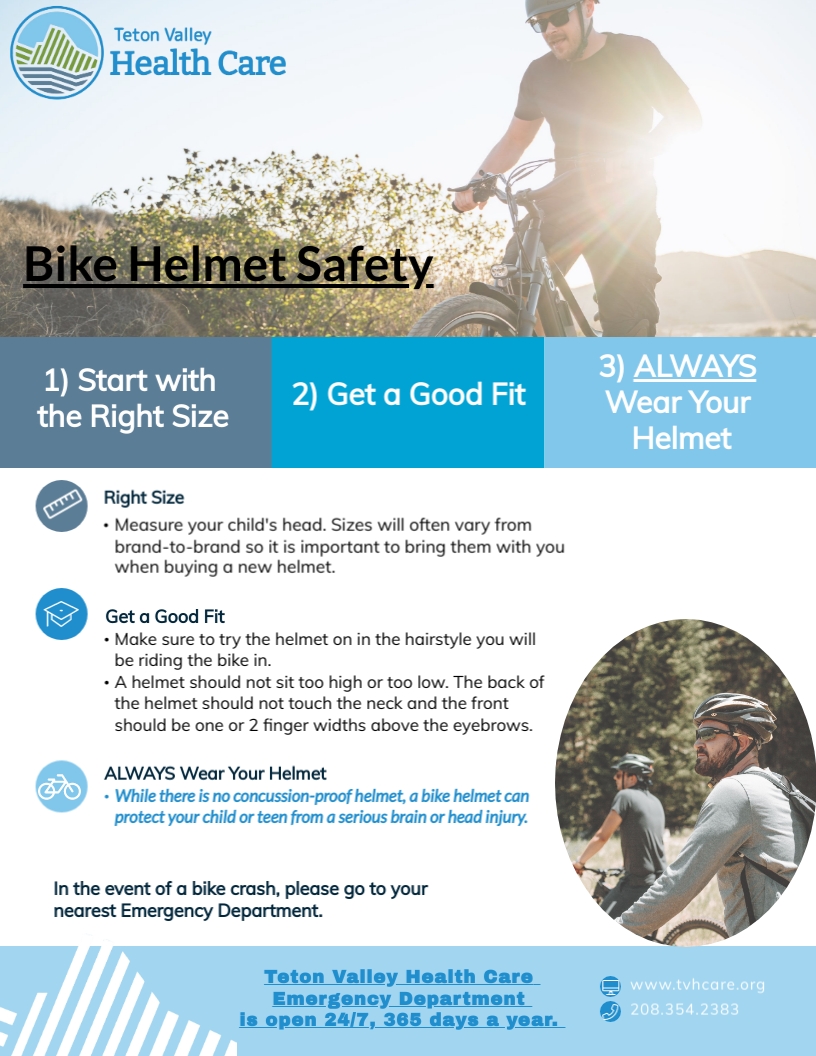
Bike Helmet Safety


Start with the Right Size:
- BRING THE BIKE RIDER
Bring your child or teen with you when buying a new helmet to make sure that you can check for a good fit. - HEAD SIZE
To find out the size of your child’s or teen’s head, wrap a soft tape measure around his or her head, just above their eyebrows and ears. Make sure the tape measure stays level from front to back. (If you don’t have a soft tape measure, you can use a string and then measure it against a ruler.) - SIZES WILL VARY
Helmet sizes often will vary from brand-to-brand, so it’s important to check out the helmet brand’s fit and sizing charts to find out what helmet size fits your child’s or teen’s head size.
Get a Good Fit:
- GENERAL FIT
The helmet should fit snugly all around, with no spaces between the foam and bike rider’s head. - ASK
Ask your child or teen how the helmet feels on their head. While it needs to have a snug fit, a helmet that is too tight can cause headaches. - HAIRSTYLE
Bike helmets are available for riders with long hair. Your child or teen should try on the helmet with the hairstyle he or she will wear while bike riding. Helmet fit can change if your child’s or teen’s hairstyle changes. For example, a long-haired bike rider who gets a very short haircut may need to adjust the fit of the helmet. - ADJUSTMENTS
Some bike helmets have removable padding or a universal fit ring that can be adjusted to get a good fit. - COVERAGE
A bike helmet should not sit too high or low on the rider’s head. To check, make sure the bottom of the pad inside the front of the helmet is one or two finger widths above the bike rider’s eyebrows. The back of the helmet should not touch the top of the bike rider’s neck. - VISION
Make sure you can see your child’s or teen’s eyes, and that he or she can see straight-forward and side-to-side. - SIDE STRAPS
The side straps should make a “V” shape under, and slightly in front of the bike rider’s ears . - CHIN STRAPS
The chin strap should be centered under the bike rider’s chin, and fit snugly so that no more than one or two fingers fit between the chin and the strap. Tell your child or teen to open their mouth wide…big yawn! The helmet should pull down on their head. If not, the chin strap needs to be tighter. If needed, you can pull the straps from the back of the helmet to adjust the chin straps. Once the chin strap is fastened, the helmet should not move in any direction, back-to-front or side-to-side.
Take Care of the Helmet:
- CHECK FOR DAMAGE
DO NOT allow your bike rider to use a cracked or broken helmet, or a helmet that is missing any padding or parts. - CLEANING
Clean the helmet often inside and out with warm water and mild detergent. DO NOT soak any part of the helmet, put it close to high heat, or use strong cleaners. - PROTECT
DO NOT let anyone sit or lean on the helmet. - STORAGE
Do not store a bike helmet in a car. The helmet should be stored in a room that does not get too hot or too cold, and where the helmet is away from direct sunlight. - DECORATION
DO NOT decorate (paint or put stickers on) the helmet without checking with the helmet manufacturer, as this may affect the safety of the helmet. This information may also be found on the instructions label or on the manufacturer’s website.
Look for the Labels:
LOOK FOR A BIKE HELMET WITH LABELS THAT:
- Have the date of manufacture. This information will be helpful in case the helmet is recalled; and
- Say U.S. Consumer Product Safety Commission (CPSC)1 certified. That label means that the helmet has been tested for safety, and meets the federal safety standard.
Some bike helmets may also have a label stating that they are ASTM2, Snell3, or ANSI4 certified. These labels let you know that the helmet has also passed the safety tests of these organizations.
When to Replace a Bike Helmet:
- ONE IMPACT
Replace any bike helmet that is damaged or has been involved in a crash. Bike helmets are designed to help protect the rider’s brain and head from one serious impact, such as a fall onto the pavement. You may not be able to see the damage to the foam, but the foam materials in the helmet will crush after an impact. That means that the foam in the helmet won’t be able to help protect the rider’s brain and head from another impact.
Multi-Use Helmets:
Some helmet companies have created multi-use helmets for biking, skateboarding, and other activities. Multi-use helmets are designed to withstand multiple very minor hits; however, a multi-use helmet MUST be replaced if it has been involved in a serious crash, or if it is damaged. Before your child or teen uses a multiuse helmet for biking, make sure the helmet has a CPSC label certifying it for biking.
https://www.cdc.gov/headsup/pdfs/helmets/HeadsUp_HelmetFactSheet_Bike_508.pdf
If you or your loved one have been in a bike crash, please go to your nearest Emergency Department. Teton Valley Health Care Emergency Department is open 24/7, 365 days a year. Call (208)254-2383 for more information.